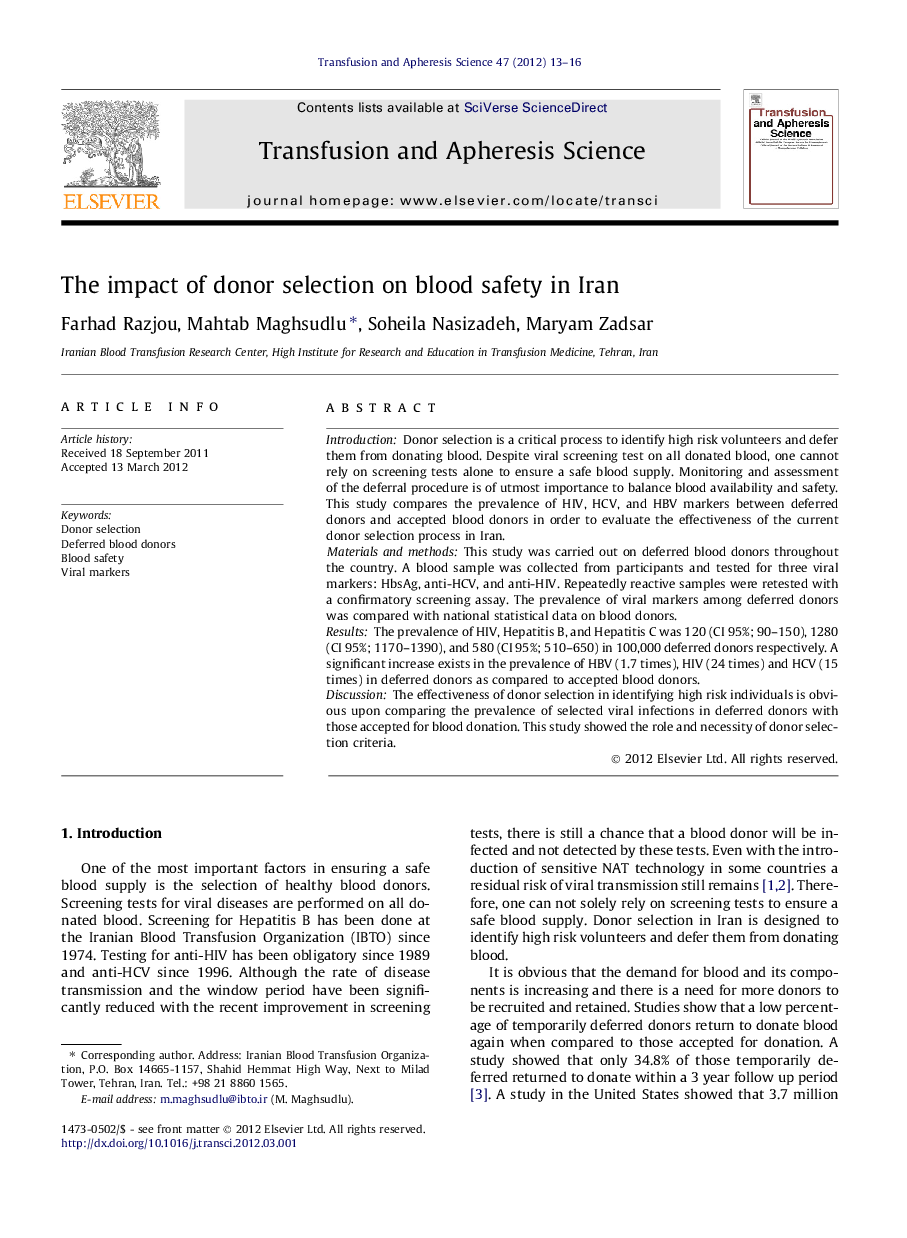| Article ID | Journal | Published Year | Pages | File Type |
|---|---|---|---|---|
| 3335245 | Transfusion and Apheresis Science | 2012 | 4 Pages |
IntroductionDonor selection is a critical process to identify high risk volunteers and defer them from donating blood. Despite viral screening test on all donated blood, one cannot rely on screening tests alone to ensure a safe blood supply. Monitoring and assessment of the deferral procedure is of utmost importance to balance blood availability and safety. This study compares the prevalence of HIV, HCV, and HBV markers between deferred donors and accepted blood donors in order to evaluate the effectiveness of the current donor selection process in Iran.Materials and methodsThis study was carried out on deferred blood donors throughout the country. A blood sample was collected from participants and tested for three viral markers: HbsAg, anti-HCV, and anti-HIV. Repeatedly reactive samples were retested with a confirmatory screening assay. The prevalence of viral markers among deferred donors was compared with national statistical data on blood donors.ResultsThe prevalence of HIV, Hepatitis B, and Hepatitis C was 120 (CI 95%; 90–150), 1280 (CI 95%; 1170–1390), and 580 (CI 95%; 510–650) in 100,000 deferred donors respectively. A significant increase exists in the prevalence of HBV (1.7 times), HIV (24 times) and HCV (15 times) in deferred donors as compared to accepted blood donors.DiscussionThe effectiveness of donor selection in identifying high risk individuals is obvious upon comparing the prevalence of selected viral infections in deferred donors with those accepted for blood donation. This study showed the role and necessity of donor selection criteria.
